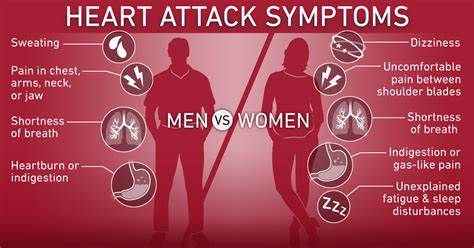Understanding the Sensations and Experiences Associated with a Heart Attack
- Shane Yole
- Aug 13
- 3 min read
Heart attacks are often depicted in dramatic ways on screen, but the actual experience can be much more nuanced. Recognizing what a heart attack feels like is vital for identifying symptoms early and getting help. This post will clarify the sensations and experiences tied to a heart attack, giving essential insights for those at risk or simply seeking knowledge.

What is a Heart Attack?
A heart attack, or myocardial infarction, happens when blood flow to a section of the heart is blocked, typically by a blood clot. This blockage can damage the heart muscle, resulting in severe health problems or even death if not treated quickly. According to the CDC, nearly 805,000 Americans have a heart attack each year, highlighting the importance of awareness.
The symptoms of a heart attack can vary significantly. While some people may feel intense pain, others might experience subtle signs that can easily be ignored.
Common Symptoms of a Heart Attack
Chest Pain or Discomfort
Chest pain or discomfort is among the most recognized signs of a heart attack. This sensation can feel like pressure, squeezing, fullness, or pain that lasts more than a few minutes or goes away and returns. A survey found that 46% of heart attack patients reported chest pain. Attentiveness to the context is essential, as this discomfort can sometimes mimic indigestion or heartburn.
Shortness of Breath
Shortness of breath often accompanies chest discomfort but can also occur independently. It may feel like you cannot catch your breath or are breathing heavily. For instance, a study showed that 36% of women experienced shortness of breath without chest pain during a heart attack, making it a crucial symptom to monitor.
Pain in Other Areas of the Body
Interestingly, heart attack pain isn't confined to the chest. Many individuals also report discomfort in areas such as the arms, back, neck, jaw, or stomach. The American Heart Association states that up to 70% of heart attack patients may experience pain radiating to these regions, complicating diagnosis.
Nausea or Lightheadedness
During a heart attack, nausea, vomiting, or lightheadedness may occur. These symptoms can be misleading because they are often linked to digestive issues rather than heart problems. Approximately 30% of patients experience nausea during a heart attack, which can indicate a lack of oxygen in the body.
Cold Sweat
Experiencing a cold sweat can be another telling symptom of a heart attack. This sudden clamminess can signal distress in the body. It's essential to recognize that not everyone will display all these symptoms, and some might have atypical signs like fatigue or anxiety.
Risk Factors for Heart Attacks
Being aware of heart attack risk factors can empower individuals to take proactive steps. Common ones include:
Age: Risk increases with age, especially for men over 45 and women over 55.
Family History: A family history of heart disease raises your risk.
High Blood Pressure: This condition can harm arteries and heighten the chance of a heart attack.
High Cholesterol: Elevated cholesterol levels lead to plaque buildup in arteries, increasing risk.
Smoking: Tobacco use has been linked to a 70% higher risk of developing heart disease.
Diabetes: This ailment increases the risk of heart attacks.
Obesity: Excess weight is tied to several risk factors like hypertension and diabetes.
Lifestyle Changes to Mitigate Risk
Making specific lifestyle changes can significantly lower the risk of experiencing a heart attack. Here are a few practical steps:
Eat a Heart-Healthy Diet: Focus on a balanced diet that includes fruits, vegetables, whole grains, and lean proteins while limiting saturated fats, sugars, and sodium. According to the American Heart Association, a heart-healthy diet can reduce your risk of heart disease by up to 20%.
Exercise Regularly: Strive for at least 150 minutes of moderate aerobic activity weekly to strengthen your heart.
Quit Smoking: Getting support to stop smoking can dramatically lower your heart disease risk.
Manage Stress: Practicing stress reduction techniques like yoga or deep breathing can improve your overall heart health.
Regular Check-ups: Frequent visits to your healthcare provider can help monitor and control risk factors effectively.
Recognizing When to Seek Help
Recognizing heart attack signs and knowing when to get help can be lifesaving. If you or someone else experiences symptoms like chest pain or shortness of breath, call emergency services immediately. Don't wait to see if the symptoms go away; fast treatment can drastically improve outcomes.
Knowledge is Key in Heart Health
Understanding what a heart attack feels like is crucial for early recognition and timely intervention. Symptoms can differ widely; hence, being informed can help individuals act swiftly in emergencies. If you or someone you know is at risk, it is advisable to discuss heart health with a healthcare provider. Awareness truly can make a significant difference.










Comments